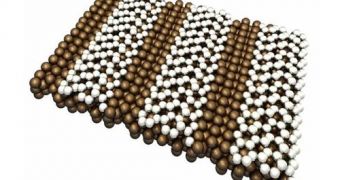While a certain compound might, at certain times, be seen as as the needed breakthrough for massive advancements in a certain field, sometimes there are alternatives, and while it isn't readily available, Silicine is this very thing for graphene.
Currently, storage relies on platters and NAND chips, while batteries and displays boast technologies not much different or evolved from those of several years ago.
As always, when a certain industrial sector hits a snag, it falls to researchers to determine what the next big technological leap requires.
In this case, graphene is considered very promising. It is a layer of pencil lead with a thickness of one single atom.
The compound has a honeycomb molecular structure and should revolutionize batteries, screens and computing overall.
Research and development has still not reached the point where any sort of practical implementation is possible, however.
Meanwhile, other parties are looking into alternatives, and it appears that one such solution, known as Silicene, has been successfully created.
It is a sort of analog to graphene, only made of silicon and with the disadvantage that it doesn't naturally align in the honeycomb shape. On the other hand, it should be more widely compatible.
“Silicon has the advantage of being more integratable in today’s electronics,” said Antoine Fleurence, a physicist at the Japan Advanced Institute of Science and Technology in Ishikawa.
The required molecular structure was achieved by means of a process involving silver ceramic compounds.
“These ribbons can be more than a hundred nanometers long, perhaps micrometers,” stated Guy Le Lay, a physicist at the University of Provence in Marseille, France.
What follows is for this Silicene to be grown on an insulating platform and see if it shows the same quantum effects as graphene. The scientists will also have to come up with a simple means to produce it, which will be the real challenge.

 14 DAY TRIAL //
14 DAY TRIAL //